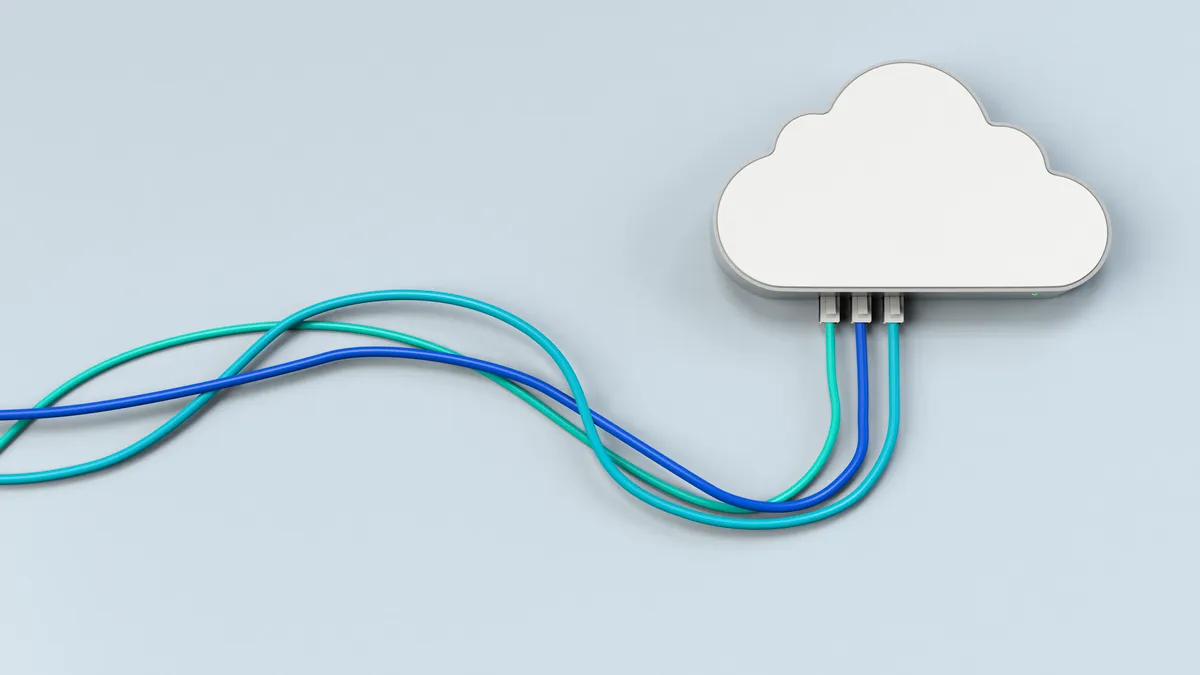When the leaders of 11 prominent public research universities signed an agreement to form the University Innovation Alliance (UIA) in 2014, it was viewed as a fairly bold (if brazen) move. They were going to share ideas in an increasingly competitive higher ed environment to tackle the thorny issue of broadening access.
Their first big initiative as a group was maybe even edgier. They were going to work toward an aggressive goal of expanding admissions by using predictive analytics at a time when few people outside of the information technology field knew much about it. They hoped it would help them enroll and graduate more underserved students.
Colleges form consortia for a variety of purposes, from cost-cutting to helping students find meaningful employment while in school. Lately, the focus has been on keeping up with sophisticated trends in technology development and online learning.
Predictive analytics, in particular, has drawn attention for its potential to help colleges spot trends in their data. The results can help them improve enrollment practices, identify at-risk and struggling students, and streamline advising. Yet it has been slow to gain converts, with fewer than half of colleges seeing it as a priority, according to an October 2016 report from nonpartisan think tank New America. Some also question its ethics, and whether the data delivers biases that cause institutions to limit some students' options.
UIA started with what it thought was a simple framework. Three leaders in predictive analytics for higher ed — Georgia State University, Arizona State University and the University of Texas at Austin — would help the eight other UIA institutions more strategically use their student data.
(Those eight institutions were: Iowa State University, Michigan State University, Oregon State, Purdue University, The Ohio State University, the University of California, Riverside, the University of Central Florida and the University of Kansas.)
However, UIA quickly realized all 11 institutions were contributing ideas about how they were using data, so it dropped those roles and reframed the initiative as a collaborative effort. Those ideas included big data projects aimed at spotting and supporting at-risk students, as well as smaller-scale proposals for getting departments to share their often-siloed information. In its five years, UIA has moved through five major grant-funded initiatives, mostly concerning data-sharing, and is working on a sixth.
"There were a lot of people doing a lot of very interesting work, but those ideas often weren't being shared, and everyone was going through the same trial and error," said UIA Executive Director Bridget Burns, describing the landscape among colleges in the burgeoning area of predictive analytics. In forming the alliance, she added, "We wanted to see how we might leapfrog over that process and both share ideas and build projects together."
So far, though, the linear path Burns planned through predictive analytics adoption and on to other student success initiatives has neither been straight nor has it visited every innovation in the way she expected. Using predictive analytics required institutions first to take a step back and map their various processes and data. This phase had benefits, the group found. Member institutions learned that proactive counseling and career services would significantly benefit students. Those became important initiatives.
Its leaders are proud of the steps the group has taken toward the initial goal of working more strategically with data.
"UIA universities have launched predictive analytics at a large scale," said Timothy Renick, senior vice president for student success at Georgia State and a key player in UIA efforts. He notes that the group is on track to surpass its goal of graduating 68,000 additional undergraduates by 2025 — so far by more than 50,000 students. It also increased its number of low-income graduates by 27,000 students over 2013 levels.
Finding the starting point
Between five and 10 representatives from each university meet at least three times a year to exchange ideas, often through short presentations followed by breakout sessions. Some projects move ahead on all campuses, while others have only been directly adopted by a few.
"We know that a cookie-cutter approach is a bad idea," Burns said. "Instead, we help our campuses learn about different predictive analytics approaches, vendors and strategies, build their campus team, and find the urgent problems on their own campuses they can address through their scaling efforts."
UIA's initial work on predictive analytics involved studying and reporting on the features of platforms available at that time. Participating universities each chose systems that worked best for them, Burns said, with several selecting software developed by EAB and Renick at Georgia State. (UIA members also use student success platform Civitas Learning and the advising tool Starfish by Hobsons.)
Over nearly seven years at Georgia State, it has generated 400,000 one-on-one interventions based on some 800 risk factors that range from repeated historical patterns to specific points of change, such as evidence of financial struggle, a significant drop in grades or a change in a student's use of the learning management system.
The third scaled project for the alliance involved proactive advising, a natural complement to the insight gained from the data. (The other early initiative found fellows to work with the campuses.)
"Our mission is to test new ideas like predictive analytics, better understand how they work, and scale effective innovations among our members and then on to other colleges," Burns said. "Predictive analytics ensures we benefit from the wisdom of past student interactions with the institutions, or at least understand the strongest indicators of past completion challenges."
Putting it into action
The University of Texas at Austin brought to the group a process that identifies the likelihood a student will graduate in four years. It uses more than 10 years of demographic and academic student data, said Carolyn Connerat, associate vice provost for enrollment management. Students identified are offered peer mentoring, academic support and the opportunity for learning through small affinity groups.
For continuing students, UT Austin's model recognizes when additional academic, personal or financial support is needed, taking into account variations in colleges. "For instance, we know that students in engineering have a lower four-year graduation rate than those in communications, so each model is tailored to the college," Connerat said.
Members are also studying UT Austin's University Leadership Network, launched in 2013. It uses data to identify about 500 freshmen each year who may be at risk of not graduating in four years, giving them up to $5,000 annually as they meet program milestones. Those include a leadership speaker series, reflection assignments and peer group meetings the first year, and experiential learning in the third.
The 2017 cohort had a 55% four-year graduation rate, well over the 33% projected for them without the intervention, according to the program website.
Connerat credits the effort with helping the university meet its goal of raising its four-year graduation rate from about 52% in 2012 to 70%, which it more or less accomplished in 2018. She also noted it helped improve graduation rates for Pell Grant-eligible students from 40% to 61% during that time.
"Our mission is to test new ideas like predictive analytics, better understand how they work, and scale effective innovations among our members and then on to other colleges."

Bridget Burns
Executive director, University Innovation Alliance
Arizona State University, meanwhile, is working with Georgia State and other UIA members on adaptive learning technology to continually assess students and give instructors feedback on how they can adjust their instruction to classes' or individual students' needs. It contributed to a 20% jump in completion among 5,000 algebra students, according to Amy Laitinen, director of higher education at New America.
"That is an example of the UIA in action," Georgia State's Renick said. "We know each other, and we know which projects our colleagues are engaged in, so we collaborate in organic groupings based on shared interests and needs."
He noted Georgia State faculty members have visited counterparts at Arizona State to exchange ideas and learn how professors there use adaptive technology with their classes.
The most recent collaborative UIA project involves chatbots, which Georgia State employed after its data analysis showed 20% of admitted freshmen were dropping out the summer before enrollment. Some 200,000 queries were processed by the bot, helping around 320 more incoming freshmen than in prior years show up for the fall semester, according to Politico.
Taking their own routes
Iowa State University used the EAB platform to give academic advisers a new dashboard to track students' progress based on historical performance benchmarks, said Ann Marie VanDerZanden, associate provost for academic programs. It also provides a system to schedule and document advising sessions and the use of academic supports such as tutoring.
"Centralized scheduling of advising appointments (have) been a huge success for both students and advisors," she said. In the first 18 months, more than 70,000 advising appointments were scheduled and more than 40,000 advising reports were created using the system. She noted that 58,000 advising sessions were made in the fall semester alone. This year the university added success markers that students are expected to meet, and it placed more attention on student life outside of the classroom.
Michigan State is similarly using the platform to gather data. Through proactive advising in the fall of 2017, it found nearly 430 students who needed additional support between their second and third fall semesters. By being able to identify and reach them more easily, the university could hold advising sessions with them at nearly twice the rate as with other students.
The University of Kansas also used its UIA involvement to focus on student success, said DeAngela Burns-Wallace, vice provost for undergraduate studies. This past fall, the university introduced its comprehensive Jayhawk GPS system, which is based on the EAB platform. Advisers can use it to develop "campaigns," which identify a group of students with a common concern — for example, they haven't registered for a necessary course — contact them directly and track their responses.
"We know each other, and we know which projects our colleagues are engaged in, so we collaborate in organic groupings based on shared interests and needs."

Timothy Renick
Senior vice president for student success, Georgia State
The University of Central Florida broadened its use of the EAB platform, using historical data to help advisers spot struggling students, contact them and develop academic pathways forward. It has reported small but steady gains in first-year retention (90.4% in 2017-18) and its six-year graduation rate (72.6% in 2012-13).
Beyond using data for interventions, participating colleges have found the process of examining student success and the barriers to it useful.
Amy Martin, assistant dean for undergraduate student success operations at Michigan State, said the mapping process spurred small changes like simplifying and consolidating multiple student calendars, as well as broad shifts like the formation of a campuswide committee that meets regularly to discuss student success initiatives.
"We were in the process of a cultural change around student success when we entered the alliance," Martin said. "We understood that their tools would have an impact. But more importantly, as we began to consider how they would be used, it moved us to think about a cohesive student experience."
Editor's note: This article has been updated to include more information on other software platforms used by UIA members.

















